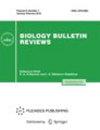泰伯达生物圈保护区植物群落系统发育分析
摘要
群落的系统发育分析是基于所研究的群落物种之间的系统发育树的距离与从当地植物区系中随机取样的距离的比较。它可以确定群落组成在多大程度上是由更密切相关的物种(即“聚集”)组成的,或者相反,它是更均匀的,包括彼此关系较小的物种。第一种情况通常被解释为受到非生物因素的强烈影响,因此具有相似生态的、先天关系更密切的物种将继续存在;在第二种情况下,生物因素,如竞争,可能会脱颖而出,并由于其生态位的差异而导致遥远的进化枝形成一个群落。本研究的目的是在两个空间尺度上探讨高加索西北地区群落的系统发育结构——4 - 100 m2的面积尺度和群落内较小的尺度。利用泰伯达生物圈保护区真实海拔高度的地植物学描述数据库,编制了高寒带地区植物区系名录。1800米。它包括57科585种开花植物。开花植物的基群是。未在列表中表示。在群落尺度上,形成于碎石和卵石上的Thlaspietea rotundifolii -群落、Calluno-Ulicetea -高寒草甸群落和Mulgedio-Aconitetea -亚高寒草甸群落在系统发育结构上没有明显的差异。在内部水平上,高寒草甸的近缘种所占比例较大。检测到集群团体字。在岩石(Asplenietea trichomanis类)和高山(Juncetea trifidi类)上发育的群落明显聚集。同时,在小尺度下,高山地衣具有均匀的系统发育结构。高山水杨科(Salicetea herbacae)在冬季积雪条件下发育较多,两者均有。与随机样本相比,鳞片中含有更多种类和远亲的植物物种。在寒地(monti - cardaminetea)、莎草草甸(Carici rupestri - kobresietea bellardii)以及灌木和优势群落(Loiseleurio-Vaccinietea类,刺柏和杜鹃)中,水生群落(Scheuchzerio-Caricetea fuscae)的研究仅在更大尺度上进行,并且物种组成具有显著的均匀性,即在系统发育上比随机样本更具多样性。Phylogenetic analysis of communities is based on the comparison of distances on the phylogenetic tree between species of a community under study and those distances in random samples taken out of local flora. It makes it possible to determine to what extent a community composition is formed by more closely related species (i.e., "clustered") or, on the opposite, it is more even and includes species that are less related with each other. The first case is usually interpreted as a result of strong influence caused by abiotic factors, due to which species with similar ecology, a priori more closely related, would remain: In the second case, biotic factors, such as competition, may come to the fore and lead to forming a community out of distant clades due to divergence of their ecological niches: The aim of this' study Was Ad explore the phylogenetic structure in communities of the northwestern Caucasus at two spatial scales - the scale of area from 4 to 100 m2 and the smaller scale within a community. The list of local flora of the alpine belt has been composed using the database of geobotanic descriptions carried out in Teberda Biosphere Reserve at true altitudes exceeding.1800 m. It includes 585 species of flowering plants belonging to 57 families. Basal groups of flowering plants are.not represented in the list. At the scale of communities of three classes, namely Thlaspietea rotundifolii - commumties formed on screes and pebbles, Calluno-Ulicetea - alpine meadow, and Mulgedio-Aconitetea subalpine meadows, have not demonstrated significant distinction of phylogenetic structure. At intra level, for alpine meadows the larger share of closely related species. (clustered community) is detected. Significantly clustered happen to be those communities developing on rocks (class Asplenietea trichomanis) and alpine (class Juncetea trifidi). At the same time, alpine lichen proved to have even phylogenetic structure at the small scale. Alpine (class Salicetea herbaceae) that develop under conditions of winter snow accumulation were more,even at the both.scale, i.e., contained more diverse and distantly related plant species compared with random samples. (Scheuchzerio-Caricetea fuscae) aquatic communities in cold (Montio-Cardaminetea), sedge meadows (Carici rupestris-Kobresietea bellardii), and communities, in which shrubs and predominated (juniper and rhododendron elfin woods, class Loiseleurio-Vaccinietea), have been studied only at the larger scale and showed significant evenness of species composition, i.e., were phylogenetically more diverse compared with random samples.

 求助内容:
求助内容: 应助结果提醒方式:
应助结果提醒方式:


